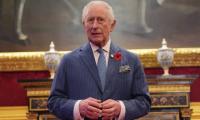“I have been working at a shop near the chowk for a while now but it was dilapidated and stray animals were often seen roaming around it. But now people will be able to rest for a while and enjoy the breeze here because this city rarely experiences chilly winds,” said an aging Abdul Hameed who was pulling down the shutter of his shop.
The revamped Pakistan Chowk was inaugurated on Sunday by PPP MPA Sharmila Farooqi who helmed the project.
Heritage consultant and architect Marvi Mazhar was contacted by Sharmila to cater to the design of the project and after around five months, Pakistan Chowk wears a new look as their efforts came to fruition.
“It started off during the time when billboards were being taken off from various points in the city and so it got paralleled alongside that campaign because the city’s outlook was being changed,” said Marvi.
“If we look at the present, the architecture has transformed from soft scape to hard scape. With the chowk, the scenario was very different because it had a strong grill alongside it and was a hub for many drug addicts who were usually present there. Apart from that it was an open defecation pit hence it was important to reclaim s pace built for everyone,” she explained.
Giving details of the initiative, she said that they employed the idea of ‘mohalla saazi’ - a word coined by Lahore-based architect Kamil Khan Mumtaz - that helps in bringing all stakeholders together especially those who are directly affected by the presence of any landmark.
“We did our social research and got architects on board to kick off the work and also planted 17 trees,” she added.
But like many other similar projects, some felt that it would be a temporary makeover which would also end up in decay. A paan-shop owner, Suleman Bhai opined that it was very difficult to maintain such initiatives: “It is the State’s job to look after such monuments because we can’t expect common people who are barely able to make ends meet, to make sure that it doesn’t end up in shambles. The most they can do is to not destroy anything placed in the area.”
Marvi, who is well aware of such sentiments, said that many people had voiced similar opinions but the next phase would address such concerns: “Shopkeepers told me that it was of no use and I believe it’s how we all have started to think now — the city dwellers are so disheartened that they fear all good things will end up badly so they refuse to take ownership. Our second phase would create this sense because we will continue with our efforts to make sure it is not abandoned.”
She said that after working on the footpaths, the plan to was to take a step further and build a community which would be involved with the work: “We heard phrases like ‘ye hamara angan tha’ and keeping that in mind we have tried to work on the social design so that people would come and use the space.”
The wooden benches placed in the space seem like ordinary ones till one takes a closer look to figure out that there are names of various personalities like Abdul Sattar Edhi, Ardeshir Cowasjee and Sadequain Naqvi among others, written on them in both English and Urdu. “There are 33 names of various people belonging to multicultural communities in the city be it Parsis, Hindus, Christians or Muslims, because while we do hear that individuals served the city in many ways, very few know as to who they actually are. So I believe this would be the only spot in the city where one can find this information,” said Marvi.
“We hope to rehabilitate zones in Karachi and give back public spaces for outdoor recreation and social well-being. It’s not restoration, but rehabilitation.”















